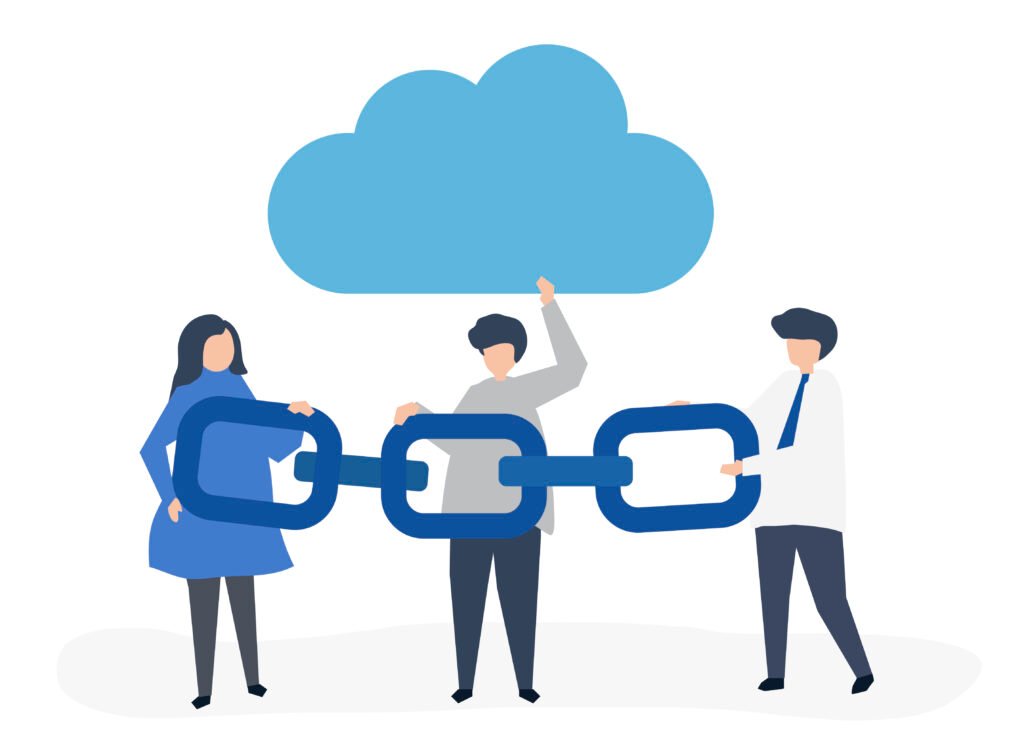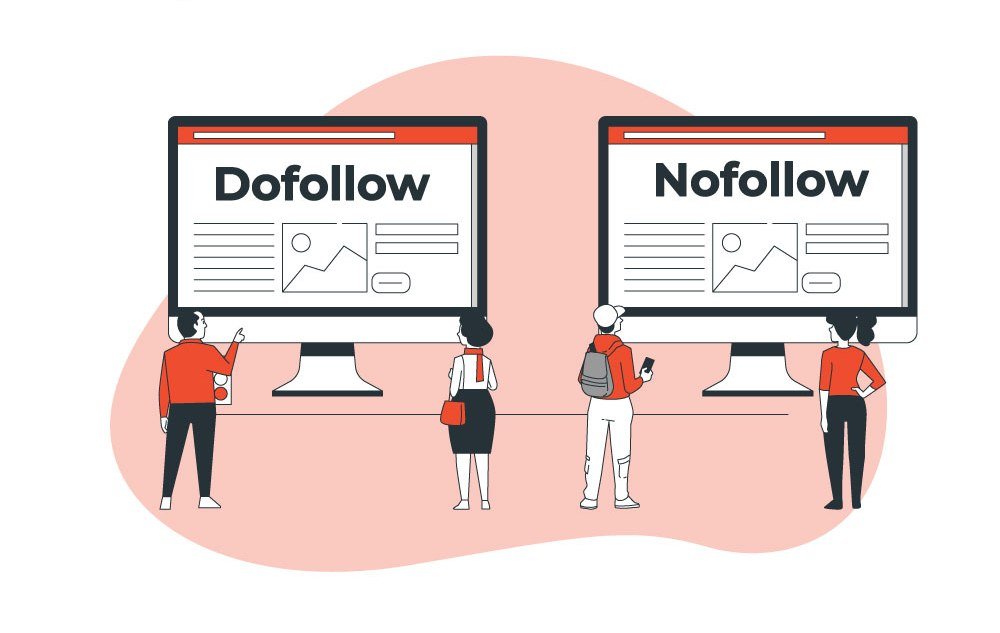
Want to know about competitor backlinks? Let’s dive into them. We often hear about SEO competitors and how they are a pain in the SEO. But what if I told you that your competitors could be your best friends? This blog post will show how analyzing your competitor’s backlinks can help boost your SEO game.
So, without wasting any time. Let’s dive in.
What Are Backlinks?

Backlinks are simply links from one website to another. But they play a vital role in SEO.
Google uses backlinks as one of the main ranking factors for websites. That’s why it’s essential to have quality backlinks from high-authority websites.
Why Are Backlinks Important?
Backlinks are vital because they help Google understand the relevancy and authority of a website.
- Relevancy

Relevancy is determined by the website’s topic linking to you.
For example, if you have a blog about “Dog Training” and get a backlink from a website about “Dog Food,” that would be relevant.
- Authority

Authority is determined by the quality of the website linking to you. A high-quality website will have a higher authority than a low-quality website.
For example, if you have a blog about “Dog Training” and get a backlink from the American Kennel Club, that would be high authority. Authority is calculated on a scale of 0 to 100.
Now that we know what backlinks are and why they’re essential let’s talk about competitor backlinks.
What Are Competitor Backlinks?
Competitor backlinks are simply backlinks from websites that your competitors are getting. These can be very valuable to your SEO strategy. Getting the competitor’s backlinks can help you progress in the SEO game.
There are many ways to find competitor backlinks. But before that, we need to find the main keywords and the competitors.
- Identify Main Keywords

Keywords are the most important thing in SEO. You need to identify the main keywords for which you want to rank. Once you have identified your main keywords, you can find your competitors.
These are the keywords that you want to rank for in Google. For example, let’s say you’re a plumber in Atlanta. Your primary keywords might be “plumber Atlanta” or “Atlanta plumbing.”
- Identify Main Competitors

Once you’ve identified your main keywords, it’s time to find your competitors. You can do this by searching for your main keywords on Google. For example, if we search for “plumber Atlanta” in Google, we’ll see a list of competitors. In this case, our competitors would be other plumbers in Atlanta.
Types Of Competitors
There are two types of competitors.
- Domain-level competitors
- Page-level competitors
- Domain-Level Competitors
Domain-level competitors are websites that compete with you for all of your main keywords. For example, let’s say we’re a plumber in Atlanta, and our main keyword is “plumber Atlanta.” Our domain-level competitors would be other plumbing companies in Atlanta that are trying to rank for the same keyword.
You can use a tool like Moz’s Open Site Explorer to find domain-level competitors. Just enter your website into the tool, which will show you a list of competitors.
- Page-Level Competitors
Page-level competitors are websites that compete with you for specific pages for specific keywords. For example, let’s say we’re a plumber in Atlanta, and our main keyword is “plumber Atlanta.” But we also want to rank for the keyword “emergency plumbing.” Our page-level competitors would be other websites trying to rank for the keyword “emergency plumbing.”
You can use a tool like Moz’s Open Site Explorer to find your page-level competitors. Just enter your website into the tool, showing you a list of competitors.
How To Find Competitor Backlinks?
Once you’ve identified your keywords and competitors, its time to competitor backlinks analysis. There are a few ways to do this:
- Moz’s Open Site Explorer
- Ahrefs
- Majestic SEO
These are just a few tools; it’s up to you which one to use.
Now that you know your Domain-Level and Page-Level competitors, it’s time to evaluate their backlinks. You can do this using various tools, such as Moz Open Site Explorer, Ahrefs, or Majestic SEO.
There are a few characteristics to be taken care of while evaluating competitors’ backlinks, and those are:
Domain Authority (DA)

The Domain Authority (DA) is a metric used to measure a website’s quality. It’s calculated on a scale of 0-100, DA 100 being the highest quality.
Page Authority (PA)

Page Authority (PA) is a metric used to measure the quality of a specific page on a website. It’s calculated on a scale of 0-100, with 100 being the highest.
Anchor Text

An anchor text is the visible, clickable text in a hyperlink. Having keyword-rich anchor text is important because it tells Google what your page is about. For example, if we’re trying to rank for the keyword “emergency plumbing,” our anchor text might be “emergency plumbing services.” If it’s not relevant, then it would be of no use.
Do-Follow/No-Follow

The follow/nofollow attribute is used to tell Google whether or not to follow a link. If a link is set to “follow,” Google will follow the link. If it’s set to “nofollow,” Google will not follow the link.
A follow link is important because it tells Google that the linked website is a trusted source of information. A nofollow link is not as important because it doesn’t mean Google trusts the linked website.
Number Of Linking Root Domains
A linking root domain is the number of websites linking to your website. For example, if three websites link to your website, you would have three linking root domains. The more king root domains you have, the better.
Note: Getting the root domains from a high-quality site can be more beneficial than multiple low-quality linking root domains.
After you have this data, you can analyze your competitors’ backlinks. This will give you an idea of which websites you are linking to and how difficult it would be to get a link from them.
What Types Of Competitors’ Backlinks Should You Focus On?
Now that we know how to find and analyze competitor backlinks, let’s focus on the backlinks we should target.
A competitor has many types of backlinks, but here we will be focusing on the ten most essential competitor backlinks, and those are:
- .edu And .gov Backlinks

.edu domains are websites associated with educational institutions, such as universities and colleges .gov domains are websites related to government institutions.
Getting a backlink from a .edu or .gov domain can be difficult because they’re usually high-quality websites with strict guidelines for linking to other websites. However, getting a backlink from an edu or gov domain would be beneficial because it would tell Google that your website is also high-quality.
To find competitors with .edu or.gov backlinks, you can use the Moz Open Site Explorer tool. Enter your competitor’s URL and click on the “Links” tab. Then, you’ll see a list of all the websites linking to your competitor.
If you see any .edu or.gov domains, that’s a good sign that you should also try to get a backlink from those websites.
A backlink from a high-DA website is beneficial because it tells Google that your website is also high-quality. The higher the DA of the linking website, the more valuable the backlink will be.
Getting a link from a high-DA website isn’t easy and can be time-consuming. But if you create a proper pathway, it can be achieved.
- Guest Posts

A guest post is when someone writes an article for another website to promote their website. Guest posts are beneficial because they usually include links to the author’s website.
You can use Google to find competitors with guest posts. Enter your competitor’s name + “guest post” into Google to see what comes up. If your competitor has written guest posts, you’ll see them listed there.
If your competitor has written guest posts for high-quality websites, that’s a good sign that you should also try to get a guest post on those websites.
- Resource Page Links
A resource page on a website lists all of the helpful resources on a specific topic. For example, if you’re looking for information about plumbing, you might go to a resource page that lists all the available plumbing resources.
You can use Google to find competitors with resource page links. Enter your competitor’s name + “resource page” into Google to see what comes up. If your competitor has any resource pages linking to their website, they are listed there.
If your competitor has resource page links from high-quality websites, that’s a good sign that you should also try to get one from those websites.
An infographic is a visual representation of information or data. They are usually shared on social media and other websites. And, if an infographic includes a link to the website where it came from, that’s called an infographic link.
You can use Google to find competitors with infographic links. Enter your competitor’s name + “infographic” to see what comes up. If your competitor has any infographics linking to their website, you’ll see them listed there.
If your competitor has infographic links from high-quality websites, that’s a good sign that you should also try to get an infographic link from those websites.
Note: Backlinks can be helpful only when they are in the Do-Follow stage; getting no-follow links will not benefit you.
These are just a few examples of the types of competitor backlinks that you should target. Getting any of these types of backlinks from high-quality websites will help your website’s SEO.
Of course, competitors aren’t the only source of backlinks. There are many other ways to get high-quality backlinks. But, if you’re starting, competitors’ backlinks are an excellent place to start.
Top Benefits Of Competitor’s Backlinks Analysis

Competitor backlink analysis is finding links your competitors have that you don’t. It helps you better understand competitors’ link-building strategies and discover new opportunities for link acquisition.
Here Are The Top Benefits Of Competitor Backlink Analysis:
- Find New Link Building Opportunities
- Improve Link Quality
- Get an Idea of Your Competitors’ Link-building Strategies
- Finding Out Which Websites Are Linking to Your Competitors
- Avoid Linking to Bad Neighborhoods
- Increase Link Popularity
Is It Worth Investing In Competitor’s Backlinks?
It is worth investing in your competitor’s backlinks because it will help your website rank higher in search engine results pages (SERPs), leading to more organic traffic and sales.
There are a few things to keep in mind when you’re looking at competitors’ backlinks,
- High-quality websites
- Do-follow links
- Relevant to your website
If you can find competitors’ backlinks using the above metrics, it is well worth investing in their backlinks.
How Often Do We Need To Spy On Competitors’ Backlinks?
It would help if you kept spying on competitors’ backlinks at least once a month. This will help to see what new backlinks they’ve acquired and where they are getting from. It will also give you an idea of which backlinks are working well for them so you can try to get those same links for your website.
Conclusion
Now, from the above guide, you might be able to understand the process of analyzing competitors’ backlinks and how important they are for your website. So, start spying on your competitors’ backlinks and see how it benefits your website’s SEO.
Lastly, don’t forget the three things, i.e. High-quality(DA), Do-follow, and relevant backlinks, to make your competitors’ backlinks worth investing in.
I hope this guide was helpful. If you have any questions, feel free to ask in the commotion below. We will be happy to answer all your questions related to backlink-building.


